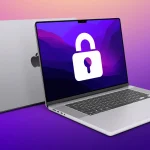Ransomware is a type of malicious software designed to block access to a computer system or data until a ransom is paid. It typically encrypts the victim’s files and demands a payment to restore access. Ransomware attacks can have devastating effects, causing significant data loss and financial damage. This form of malware has become increasingly sophisticated, posing a severe threat to individuals, businesses, and government institutions alike.
The GameCrypt Ransomware Threat
GameCrypt Ransomware is a specific strain of ransomware that targets Windows systems. Once installed, it encrypts the victim’s files, appending a unique file extension to each one. The ransomware then leaves a ransom note demanding payment in exchange for the decryption key needed to recover the encrypted files.
Installation and Functionality
GameCrypt Ransomware typically infiltrates systems through malicious email attachments, software downloads from untrusted websites, or exploits in outdated software. Once executed, it scans the system for various file types and begins the encryption process, making the files inaccessible to the user. For example, a file named “document.txt” might be renamed to “document.txt.gamecrypt” after encryption.
Consequences of Infection
The presence of GameCrypt Ransomware on a system results in significant disruption. Users lose access to critical data, and the ransom note threatens further damage or permanent data loss if the ransom is not paid. This puts immense pressure on the victim to comply with the attackers’ demands.
Ransom Note Details
The ransom note left by GameCrypt Ransomware is usually a text file placed on the desktop and in various folders containing encrypted files. It includes instructions on how to make the payment, often demanding cryptocurrency like Bitcoin due to its anonymity. The note warns against seeking third-party help or attempting to decrypt the files independently, threatening permanent data loss if these instructions are not followed.
Symptoms of GameCrypt Ransomware Infection
Detecting GameCrypt Ransomware involves identifying specific symptoms:
- Files encrypted with a new extension, such as “.gamecrypt.”
- A ransom note file present on the desktop and in affected directories.
- Inability to open or access various file types, such as documents, images, and videos.
- System performance degradation due to the ransomware’s encryption process running in the background.
Detection Names
Various cybersecurity tools may detect GameCrypt Ransomware under different names, such as:
- Win32/Filecoder.GameCrypt
- Trojan.Ransom.GameCrypt
- Ransom.GameCrypt.A
- Malware.GameCrypt
Similar Threats
Other ransomware variants that users might encounter include:
- WannaCry Ransomware
- Locky Ransomware
- CryptoLocker Ransomware
- Ryuk Ransomware
Comprehensive Removal Guide
Removing GameCrypt Ransomware involves several steps. Follow this guide to ensure complete removal and recovery of your system:
- Disconnect from the Internet: This prevents the ransomware from communicating with its command and control servers.
- Enter Safe Mode:
- Restart your computer.
- Press F8 or Shift+F8 before the Windows logo appears.
- Select “Safe Mode with Networking” from the menu.
- Use Anti-Malware Software:
- Download and install reputable anti-malware software.
- Perform a full system scan.
- Follow the software’s instructions to remove any detected threats.
- Delete Temporary Files:
- Open “Disk Cleanup” by typing it into the Windows search bar.
- Select the drive to clean (usually C:).
- Check the boxes for temporary files and other unnecessary items, then click “OK.”
- Restore Files from Backup:
- If you have a recent backup, restore your files from it.
- Ensure the backup is clean by scanning it with anti-malware software before restoring.
- Use Decryption Tools: If available, use a decryption tool specific to GameCrypt Ransomware. Check reputable cybersecurity websites for legitimate tools.
- Reinstall Operating System (if necessary): As a last resort, consider reinstalling the operating system to ensure all remnants of the ransomware are removed. This should only be done if all other methods fail and you have a backup of your data.
Prevention Tips
To prevent future infections, follow these guidelines:
- Regularly Update Software: Keep your operating system, antivirus, and other software up to date.
- Backup Data Frequently: Regularly back up your data to an external drive or cloud storage.
- Be Cautious with Email Attachments: Do not open attachments from unknown or suspicious senders.
- Use Strong Passwords: Implement strong, unique passwords for all accounts.
- Enable Firewall and Antivirus: Ensure your firewall and antivirus software are active and up to date.
Conclusion
GameCrypt Ransomware poses a significant threat, but with prompt detection and removal, its impact can be mitigated. Following the steps outlined in this guide will help you recover from an infection and protect your system from future attacks.





